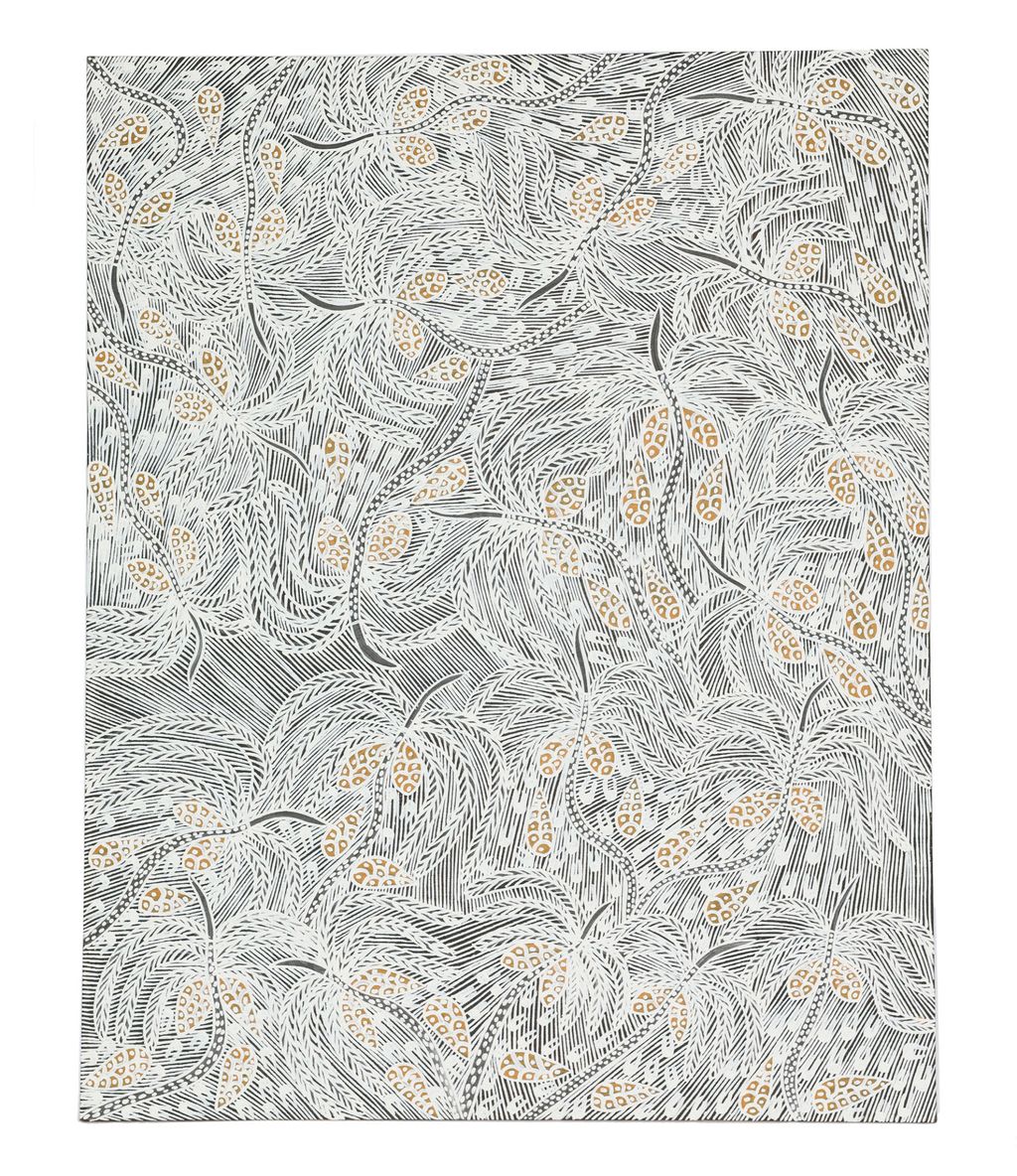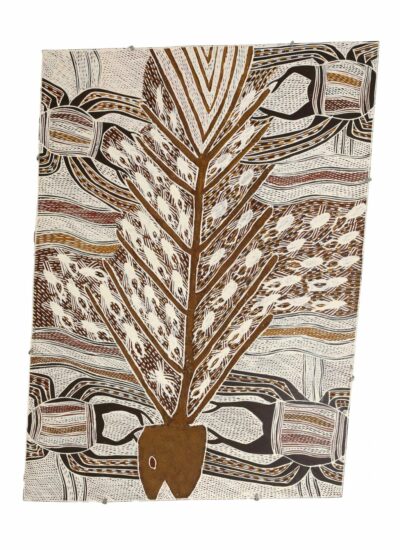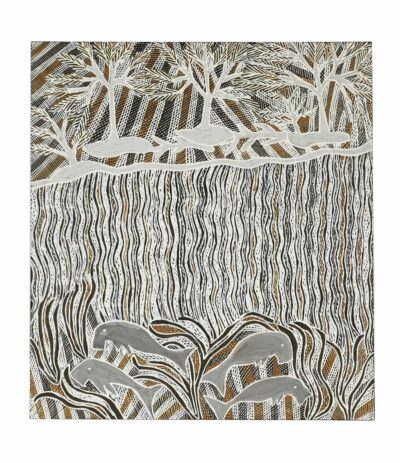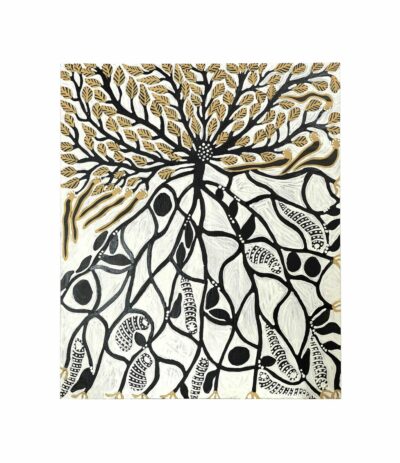Description
muluymuluy wirrpanda
Earth Pigments on board
76 x 60cm
Year: 2023
ID: 114-23
Gunga – Baby Teeth
This plant is sacred as well as crucial in practical terms. All Dhuwa clans sing of the growth of the Pandanus. But for others there is a deeper connection. In some songs the teeth of this plant are equated with the reversed teeth of the shark. The Dhuḏi Djapu have a sacred site associated with the Morning Star in which the songs connect the passage of that star with a Pandanus tree on the floodplain.
Gaḻpuŋaniny is the name of a special crook up to three metres long which is cut on-site or carried to the scene, which allows a woman to capture the few young upright leaves at the centre of the plant. These are the only leaves which can be used for weaving. The older bent ones are of no use.
We then take the teeth or thorns of each leaf off by sliding a long fingernail the length of each side. This is why we need long fingernails. We then slide our fingernail along the remaining part to halve it. We then pinch the end of each of the remnant middle two to divide them into two layers. These four pieces are put in the sun to dry and will eventually be dyed and woven.
The white stem part of each leaf can be pounded and used as an anaesthetic on sore teeth. When our kids lose their baby teeth we throw them into the Gunga tree. This toothy tree will ensure that their new teeth will come back quickly and be strong and sharp. Ḻäḻuk the orangey nuts are a vital part of the bush sauna and for women’s ceremonies following birth. It smells beautiful after its fallen to the ground. A vital antiseptic in the case of serious wounds like stingray barbs is the Boḏuk (Bush cockroach) which can almost always be found in this tree. The flammability of the leaves and trunk made this a natural torch in the old days.
The travels of Mäna the shark in Ancestral past/present/future time are sung by various Dhuwa clans including Mulkun’s Dhudi-Djapu. The cycle by the Gapudäyindimirri starts from Barparra through to the Island Yirrinyarra. The pigeon Ŋapalawal in the coastal mangroves singing ‘guguk’ the incoming tide, the sound itself of the shark rushing through the water. Mäna rested here leaving his sacred spear Warrŋgul (made with many long stingray barbs and symbolic of his powerful sharp teeth) under the shade of the Wupularri (a special sacred pandanus palm site) before moving on. On inspecting the leaf of Wupularri the sharp barbs of Mäna’s teeth are felt.






Reviews
There are no reviews yet.